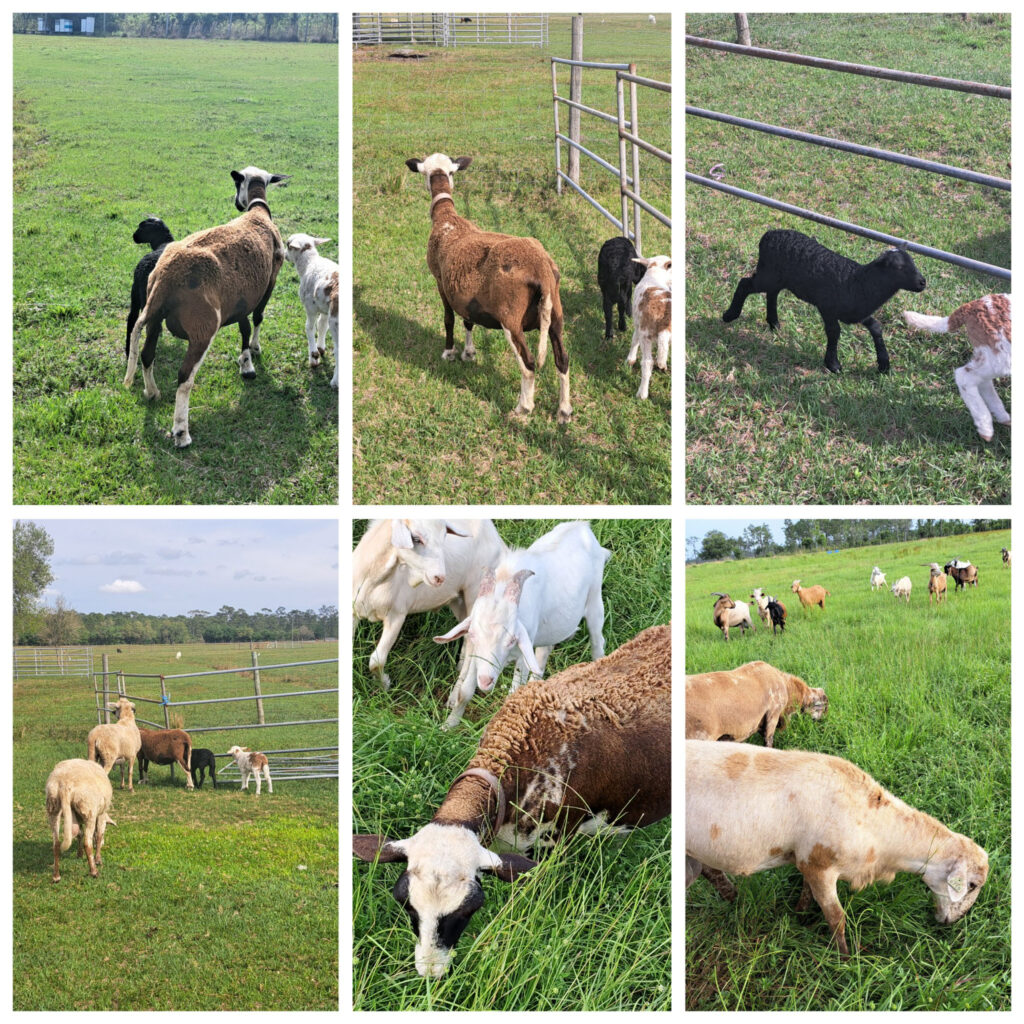Katahdin Sheep

The katahdin is a breed of domestic sheep developed by breeder Michael Piel in Maine, United States. He named this new breed after Mount Katahdin – the state’s highest peak. The breed was developed during the second half of the 20th century by crossing selected St. Croix sheep from the Virgin Islands with various other breeds, including the Suffolk. Lambs were selected based on hair coat, meat-type conformation, high fertility, parasite resistance (a trait inherited from its St. Croix ancestors), and flocking instinct.
The average Katahdin ewe weight is 120 to 160 pounds and the ram’s average weight is 180 to 250. The Katahdin sheds its winter coat, so does not have to be sheared. The Katahdin’s hair comes in a variety of colors, as the emphasis of the breed is on production rather than appearance.
At NWF, we started with a small flock and have been selectively breeding to meet body conformation, parasite resistance, fertility, and coat standards.
Goat and Sheep Manure
Goat and sheep manure is a common fertilizer that can help plants grow healthier and increase crop yields. It’s high in nitrogen, which is beneficial for plants. Goat and sheep manure is also odorless, doesn’t usually attract insects, and doesn’t burn plants like cow or horse manure.
Goat and sheep manure can be used to improve the soil in fields and gardens. It can help regulate soil organic matter content and microbial diversity, which can affect the soil’s capacity. Animal manure is a good fertilizer because it contains high concentrations of easily decomposable carbon and nitrogen compounds. These compounds provide nutrients to soil microorganisms, which can speed up decomposition rates. Please visit our store to check availability.

Please visit our store to see what is available at this time. Please visit our gallery to see pics and videos working with the goats. We invite questions and comments by reaching us through our Contact Us Page.
